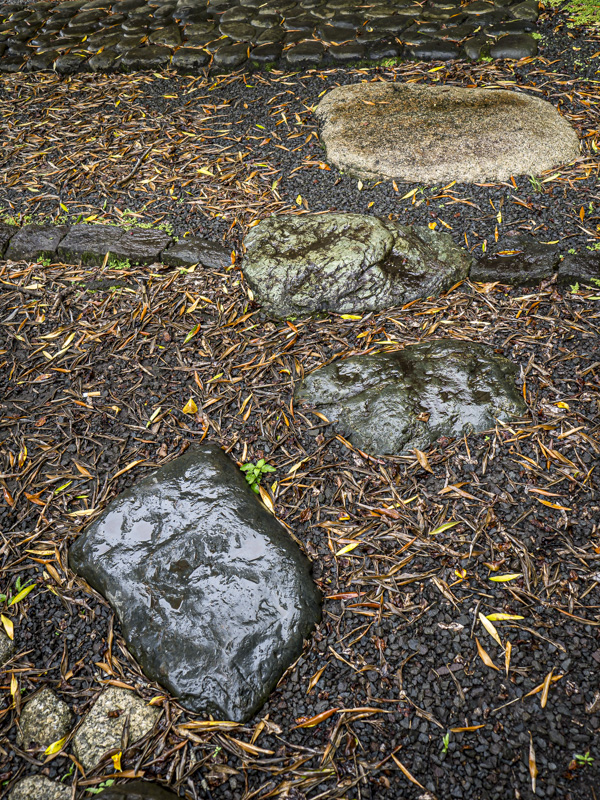Every Picture Is a Compromise
Lessons from the Also-rans
Most photography websites show the photographer's very best work. Wonderful. But that's not the full story of a creative life. If we want to learn, we'd better pay attention to the images that aren't "greatest hits" and see what lessons they have to offer. Every picture is a compromise — the sum of its parts, optical, technical, visual, emotional, and even cosmic – well, maybe not cosmic, but sometimes spiritual. Success on all fronts is rare. It's ok to learn from those that are not our best.
This is a series about my also-rans, some of which I've been able to improve at bit (i.e., "best effort"), none of which I would consider my best. With each there are lessons worth sharing, so I will.
Original digital captureWhat I saw that I liked:Simple scene, just a wet path and some fallen leaves. What I don't like in the picture:In the one above, I suppose the light tan rock is the subject, but the compositional lines that take control of the image are the edges of the black stone path. And unfortunately, those lines lead your eye right out of the upper left corner. In fact, they are so strong that the tan rock becomes almost invisible. What I learned:The one at left still says, "wet path and fallen leaves" but the "path" is the four large stones. As your eye moves up that path, it hits the small stone path that was so dominant in the photo above. The fact that it's blocking the exit helps bring your eye back into the image. 2nd Chances: What I might try nextIn truth, neither of these are very good photographs, but they do illustrate how a couple of feet change in position can make all the difference in the world. Also, a good example of why it's a good idea to make several compositions once you've decided to photograph a given subject. |


